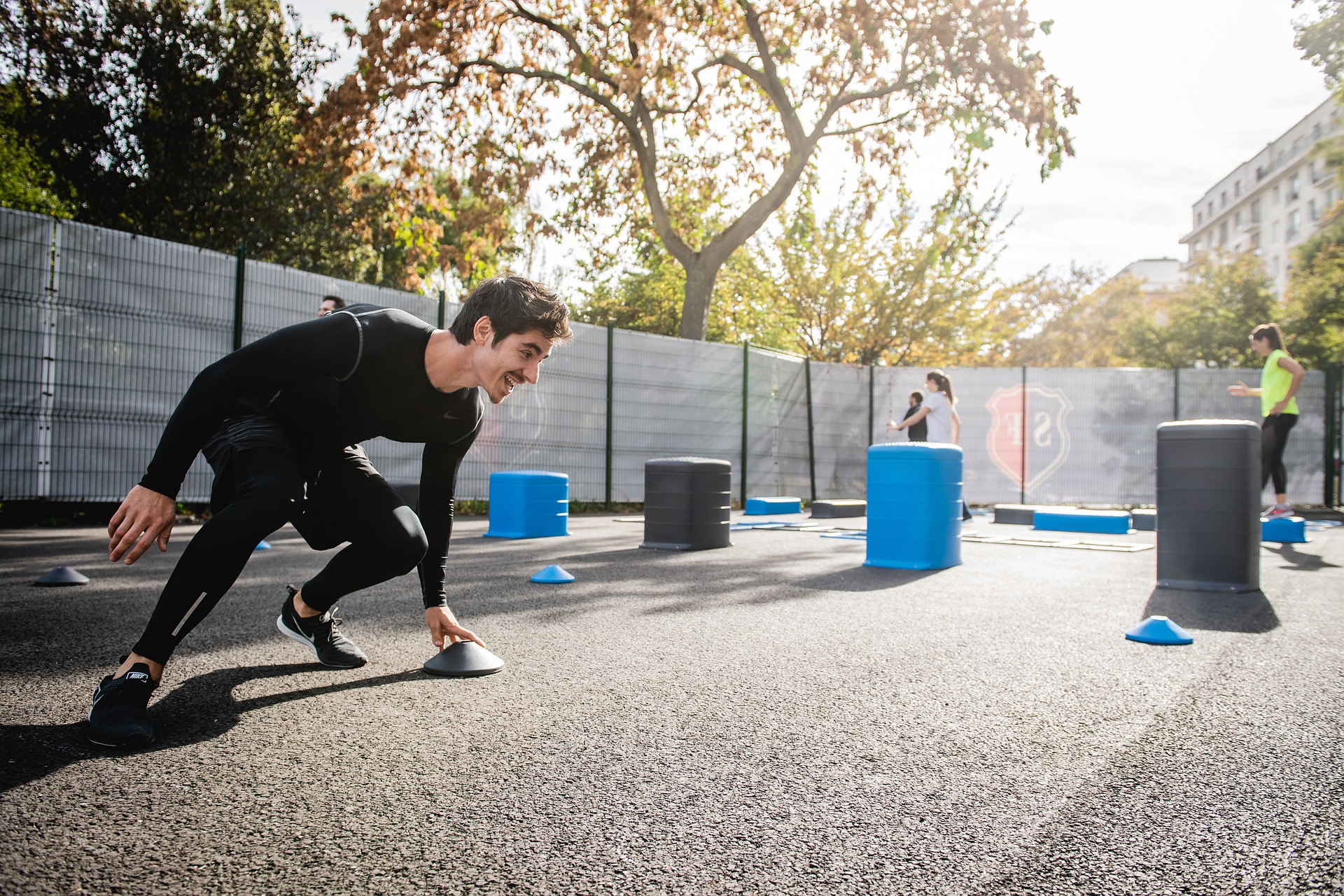In the hustle and bustle of modern life, it’s easy to overlook the profound connection between physical activity and mental well-being. While we often focus on the physical benefits of workouts, such as weight loss or improved cardiovascular health, their impact on mental health is equally significant, if not more so. In this article, we’ll delve into the transformative power of workouts and explore how they positively affect our mental and emotional well-being.
1- The Chemical Balance:
The “Chemical Balance” point refers to the physiological changes that occur in the body during and after exercise, leading to improvements in mood and overall mental well-being. Here’s a more detailed explanation of how workouts impact our chemical balance:
Endorphins:
Endorphins are neurotransmitters produced by the central nervous system and the pituitary gland. They are often referred to as the body’s natural painkillers because they help alleviate discomfort and induce feelings of pleasure and euphoria. Exercise triggers the release of endorphins, particularly during activities that elevate the heart rate, such as running, cycling, or aerobic workouts. The influx of endorphins contributes to the “runner’s high” sensation, characterized by a sense of exhilaration and reduced sensitivity to pain. This natural mood boost is one of the immediate benefits of physical activity.
Serotonin:
Serotonin is another neurotransmitter that plays a crucial role in regulating mood, sleep, appetite, and cognitive function. Low levels of serotonin are associated with conditions like depression and anxiety. Exercise has been shown to increase serotonin levels in the brain, promoting feelings of happiness, relaxation, and well-being. Regular physical activity can therefore help alleviate symptoms of mood disorders and contribute to a more positive outlook on life.
Dopamine:
Dopamine is a neurotransmitter involved in motivation, reward, and pleasure. It plays a key role in the brain’s reward system, reinforcing behaviors that are pleasurable or beneficial. Exercise stimulates the release of dopamine, leading to feelings of satisfaction and enjoyment. This dopamine response acts as a natural incentive to engage in physical activity, making workouts more rewarding and reinforcing the habit of regular exercise.
Cortisol Regulation:
Cortisol is a hormone produced by the adrenal glands in response to stress. Elevated levels of cortisol can contribute to anxiety, mood disturbances, and other negative effects on mental health. Exercise helps regulate cortisol levels, particularly high-intensity workouts that provide a stress-relieving outlet. By reducing cortisol secretion and promoting a more balanced stress response, exercise contributes to overall stress resilience and mental well-being.
Neuroplasticity and Brain Health:
Beyond neurotransmitter regulation, exercise also influences brain structure and function through mechanisms such as neuroplasticity. Neuroplasticity refers to the brain’s ability to reorganize neural pathways, form new connections, and adapt to experiences. Physical activity, especially aerobic exercise, promotes neuroplasticity by stimulating the growth of brain-derived neurotrophic factor (BDNF), a protein that supports neuronal growth, survival, and synaptic plasticity. This process enhances cognitive function, mood regulation, and overall brain health.
In summary, the chemical balance induced by exercise involves a complex interplay of neurotransmitters, hormones, and neuroplastic mechanisms that contribute to improved mood, stress resilience, cognitive function, and overall mental well-being. Regular physical activity is not only beneficial for physical health but also essential for maintaining a healthy mind-body connection.
2- Stress Reduction:
In today’s fast-paced world, stress has become a common companion for many people, impacting mental and physical well-being. However, amidst the challenges of modern life, there shines a beacon of hope: regular exercise. The “Stress Reduction” point delves into the profound impact that consistent workouts can have on lowering stress levels and improving overall well-being. Let’s take a closer look at how exercise serves as a powerful antidote to stress, offering a pathway to a calmer mind and a healthier body:
Cortisol Regulation:
When we experience stress, our bodies release cortisol, often referred to as the “stress hormone.” While cortisol serves a vital role in the body’s fight-or-flight response to immediate threats, chronic stress can lead to elevated and sustained cortisol levels, which can have detrimental effects on physical and mental health. Exercise helps regulate cortisol production by providing a healthy outlet for stress reduction. Physical activity signals to the body that the stress response has been addressed, leading to a decrease in cortisol levels post-exercise. This regulation of cortisol helps restore balance to the body’s stress response system.
Endorphin Release:
As mentioned earlier, exercise triggers the release of endorphins, which are natural mood lifters and pain relievers. Endorphins counteract the negative effects of stress by promoting feelings of relaxation, pleasure, and well-being. This endorphin release during and after workouts contributes to a sense of emotional relief and helps individuals cope with stress more effectively.
Physical Tension Release:
Stress often manifests physically through muscle tension, headaches, and other bodily discomforts. Engaging in physical activity, whether through cardio exercises, strength training, yoga, or other forms of exercise, helps release built-up tension in muscles. Stretching and movement patterns during workouts promote relaxation and reduce physical symptoms of stress, such as tightness and stiffness.
Mindfulness and Distraction:
Exercise can serve as a form of mindfulness and distraction from stressors. When we’re fully engaged in a workout, focusing on our movements, breathing, and physical sensations, we enter a state of mindfulness that calms the mind and reduces rumination about stressful thoughts. Additionally, exercise provides a constructive way to shift attention away from stressors, allowing individuals to temporarily disconnect and recharge mentally.
Improvement in Sleep Quality:
Chronic stress can disrupt sleep patterns, leading to insomnia or poor sleep quality. Regular exercise has been shown to improve sleep duration and quality. By promoting deeper, more restorative sleep, workouts contribute to overall stress resilience. Adequate sleep is crucial for mental and emotional well-being, as it allows the body and mind to recover from daily stressors and recharge for the next day.
Emotional Regulation:
Engaging in physical activity can improve emotional regulation skills. As individuals experience the sense of accomplishment and empowerment that comes with overcoming workout challenges, they build resilience and confidence in their ability to cope with stressors. Exercise also provides a healthy emotional outlet, allowing individuals to channel and release pent-up emotions in a constructive manner.
By incorporating regular workouts into their routines, individuals can proactively manage stress, improve their overall mood, and build resilience against the negative effects of chronic stress on mental and emotional well-being.
3- Boosting Cognitive Function:
In our quest for a healthier and more fulfilling life, we often focus on physical fitness while overlooking the profound effects that exercise can have on our cognitive abilities. The “Boosting Cognitive Function” point shines a light on the transformative power of regular workouts in enhancing memory, focus, and overall brain health. This detailed exploration delves into the mechanisms through which exercise positively impacts cognitive function, offering insights into how physical activity can sharpen our minds and improve our quality of life:
Improved Blood Flow and Oxygenation:
Physical activity, especially cardiovascular exercises like running, swimming, or cycling, increases blood flow to the brain. This enhanced blood flow delivers oxygen and nutrients to brain cells, supporting their optimal functioning. Better oxygenation of brain tissue leads to improved cognitive abilities, including sharper focus, enhanced memory retention, and faster information processing.
Neurogenesis and Neuroplasticity:
Exercise stimulates the production of brain-derived neurotrophic factor (BDNF), a protein that plays a key role in neurogenesis (the formation of new neurons) and neuroplasticity (the brain’s ability to reorganize and adapt). Neurogenesis occurs primarily in the hippocampus, a brain region critical for learning and memory. By promoting the growth of new neurons and strengthening neural connections, exercise enhances cognitive abilities such as learning, spatial navigation, and decision-making.
Enhanced Executive Function:
Executive function refers to a set of mental skills that enable us to plan, focus attention, multitask, and regulate impulses. Regular physical activity has been linked to improved executive function across all age groups, from children to older adults. Exercise promotes the development and maintenance of neural networks involved in executive control, leading to better organizational skills, improved time management, and enhanced problem-solving abilities.
Mood and Stress Management:
Cognitive function is closely intertwined with emotional well-being. Exercise’s ability to reduce stress and improve mood has a direct impact on cognitive performance. When individuals are less stressed and in a positive mood state, they tend to exhibit better cognitive flexibility, creativity, and mental resilience. This emotional regulation contributes to overall cognitive function and mental clarity.
Neuroprotective Effects:
Regular exercise has neuroprotective effects that help preserve brain health and reduce the risk of cognitive decline with age. Studies have shown that physically active individuals have a lower incidence of neurodegenerative diseases such as Alzheimer’s and dementia. Exercise promotes the production of neuroprotective compounds, enhances antioxidant defenses, and reduces inflammation in the brain, all of which contribute to long-term brain health and cognitive preservation.
Enhanced Brain Connectivity:
Functional MRI studies have demonstrated that exercise can lead to increased connectivity between different brain regions. This enhanced connectivity facilitates efficient communication within the brain’s neural networks, resulting in improved cognitive coordination and information processing. It also supports cognitive flexibility, allowing individuals to adapt to new tasks and challenges more effectively.
Better Sleep Quality:
As mentioned in the previous section, exercise contributes to better sleep quality. Adequate sleep is essential for cognitive function, as it enables the brain to consolidate memories, process information, and recharge neuronal networks. By promoting restful sleep, exercise indirectly enhances cognitive performance during waking hours.
In summary, regular workouts have a profound impact on cognitive function by promoting neurogenesis, improving blood flow to the brain, enhancing executive control, managing stress, preserving brain health, and facilitating better sleep. Incorporating physical activity into one’s lifestyle not only benefits physical health but also supports optimal brain function, mental clarity, and overall cognitive well-being across the lifespan.
4- Self-Esteem and Confidence:
Embarking on a fitness journey isn’t just about transforming the body; it’s also a powerful catalyst for boosting self-esteem and confidence. The “Self-Esteem and Confidence” point delves into the profound impact that regular workouts can have on an individual’s sense of self-worth and belief in their abilities. This detailed exploration uncovers the intricate relationship between exercise and self-esteem, highlighting how physical activity empowers individuals to not only strengthen their bodies but also cultivate a positive self-image and inner resilience:
Sense of Achievement:
Setting and achieving fitness goals, whether they are related to endurance, strength, flexibility, or overall fitness level, can contribute significantly to a sense of achievement. When individuals see tangible progress in their physical abilities, such as running longer distances, lifting heavier weights, or mastering challenging yoga poses, it boosts their confidence and self-esteem. This sense of accomplishment is empowering and motivates individuals to continue challenging themselves and striving for improvement.
Physical Transformation:
Regular exercise often leads to positive changes in physical appearance, such as increased muscle tone, weight loss, improved posture, and enhanced overall fitness. These visible changes can enhance body image and self-perception, leading to increased self-confidence. Feeling stronger, healthier, and more capable physically can translate into a more positive self-image and higher self-esteem.
Endorphin Release:
As mentioned earlier, exercise triggers the release of endorphins, neurotransmitters that promote feelings of happiness, pleasure, and well-being. The mood-enhancing effects of endorphins contribute to a positive outlook on life and can boost self-esteem. Individuals who engage in regular workouts often report feeling more confident, energized, and mentally resilient due to these biochemical changes.
Sense of Mastery:
Mastering new skills and overcoming physical challenges during workouts builds a sense of mastery and competence. Whether it’s learning proper form for strength training exercises, improving flexibility through yoga practice, or achieving personal bests in cardio workouts, each accomplishment reinforces a sense of capability and self-efficacy. This belief in one’s ability to succeed and overcome obstacles extends beyond the gym or fitness setting, leading to increased confidence in other areas of life.
Positive Feedback Loop:
The positive feedback loop created by regular exercise reinforces self-esteem and confidence. When individuals consistently engage in physical activity and experience the associated benefits, such as improved mood, increased energy levels, and enhanced physical fitness, they receive positive reinforcement for their efforts. This cycle of positive experiences and outcomes fosters a sense of self-worth and confidence in one’s abilities to maintain a healthy lifestyle and achieve personal goals.
Stress Management:
Exercise is a natural stress reliever and mood enhancer. Managing stress effectively through physical activity contributes to overall emotional well-being and resilience. When individuals feel more in control of their stress levels and have healthy coping mechanisms, such as exercise, it positively impacts their self-esteem. Knowing that they can handle stressors and maintain balance in their lives boosts confidence and self-assurance.
Social Support and Encouragement:
Many workout environments, such as fitness classes, group training sessions, or sports teams, provide opportunities for social interaction, support, and encouragement. Positive social connections and feedback from peers and instructors can bolster self-esteem by reinforcing a sense of belonging, acceptance, and accomplishment within a community of like-minded individuals pursuing fitness goals together.
In summary, engaging in regular workouts can boost self-esteem and confidence through a sense of achievement, physical transformation, endorphin release, mastery of skills, positive feedback loops, stress management, and social support. These psychological benefits of exercise extend beyond physical health and contribute to a positive self-image, mental resilience, and overall well-being.
5- Social Connection:
Beyond its physical benefits, exercise has the remarkable power to forge bonds, nurture friendships, and create vibrant communities. The “Social Connection” point delves into the transformative impact of specific workouts and fitness activities in fostering social interaction, cultivating a sense of belonging, and nurturing positive relationships. This detailed exploration unravels how shared sweat sessions and group fitness endeavors can weave a tapestry of social connections, enriching lives and enhancing overall well-being through the camaraderie of exercise.
Group Fitness Classes:
Group fitness classes, such as spinning, aerobics, yoga, or dance classes, provide opportunities for social interaction and camaraderie. Participants often bond over shared fitness goals, challenges, and achievements. The group setting creates a supportive environment where individuals can motivate each other, share experiences, and build friendships. Regularly attending group classes can lead to the formation of a fitness community that enhances social connections and accountability.
Team Sports:
Participating in team sports, whether recreational or competitive, fosters teamwork, cooperation, and social bonding. Teammates work together towards a common goal, develop trust and communication skills, and share victories and setbacks. The social aspect of team sports includes post-game celebrations, team gatherings, and a sense of belonging to a supportive athletic community. Team sports also provide opportunities for leadership development and learning from diverse perspectives.
Outdoor Activities:
Many outdoor activities, such as hiking, cycling, or group runs, offer opportunities for social connection in natural settings. Engaging in outdoor workouts with friends or joining outdoor fitness groups allows individuals to enjoy physical activity while also connecting with others who share a love for nature and adventure. Outdoor workouts often promote a sense of freedom, relaxation, and exploration that enhances social interactions.
Virtual Fitness Communities:
With the rise of technology, virtual fitness communities have become increasingly popular. Online platforms, social media groups, and fitness apps connect individuals with similar fitness interests and goals from around the world. Virtual fitness challenges, forums, and support networks enable participants to engage in workouts, share progress, offer encouragement, and build meaningful connections despite physical distance.
Fitness Events and Challenges:
Participating in fitness events, such as charity runs, obstacle courses, or fitness challenges, brings people together for a common cause or goal. These events create a sense of excitement, camaraderie, and accomplishment as participants train together, support each other during the event, and celebrate achievements afterward. Fitness events often attract diverse participants, fostering inclusivity and community building.
Supportive Environments:
Fitness facilities, gyms, and wellness centers that prioritize creating a supportive and inclusive environment enhance social connections among members. Friendly staff, group workout options, social events, and wellness programs encourage interaction and networking. Feeling welcomed and supported within a fitness facility motivates individuals to maintain consistent exercise habits and engage with others in the fitness community.
Accountability and Motivation:
Social connections in the context of exercise provide accountability and motivation. Workout partners, training buddies, or fitness groups can help individuals stay committed to their fitness goals, overcome challenges, and stay motivated during workouts. The encouragement and support from peers create a positive feedback loop that reinforces healthy habits and fosters a sense of community.
In summary, social connection in the realm of exercise contributes to a sense of belonging, motivation, accountability, and overall well-being. Whether through group fitness classes, team sports, outdoor activities, virtual communities, fitness events, or supportive fitness environments, social interactions enrich the exercise experience and create lasting relationships centered around health, fitness, and shared interests. These social connections not only enhance the enjoyment of physical activity but also promote mental and emotional wellness.
6- Sleep Quality:
In the quest for optimal health, one often overlooked but crucial aspect is the quality of sleep. Sleep serves as the foundation for physical and mental well-being, and regular exercise emerges as a powerful ally in improving sleep quality. This detailed exploration delves into the profound influence of exercise on our sleep patterns, highlighting the mechanisms through which physical activity can promote restful and rejuvenating sleep. Let’s uncover how engaging in regular workouts can lead to better sleep and, consequently, enhanced overall health and vitality:
Regulating Circadian Rhythms:
Physical activity helps regulate the body’s internal clock, known as the circadian rhythm. Regular exercise, especially when done consistently at the same time each day, reinforces a healthy sleep-wake cycle. This consistency signals to the body when it’s time to be awake and active and when it’s time to wind down and prepare for sleep. By aligning with natural circadian rhythms, exercise promotes more restful and rejuvenating sleep.
Stress Reduction:
Exercise is a natural stress reliever. Physical activity helps reduce levels of stress hormones such as cortisol, which can interfere with sleep quality. By managing stress effectively through exercise, individuals experience greater relaxation and ease falling asleep. Additionally, exercise triggers the release of endorphins and other feel-good neurotransmitters, promoting a positive mood conducive to better sleep.
Promoting Deep Sleep Stages:
Engaging in regular physical activity, particularly moderate to vigorous exercise, promotes deeper and more restorative sleep stages, including slow-wave sleep (SWS) and rapid eye movement (REM) sleep. During SWS, the body undergoes physical repair and growth, while REM sleep is essential for cognitive processes, memory consolidation, and emotional regulation. By enhancing these sleep stages, exercise contributes to overall sleep quality and vitality.
Reducing Insomnia Symptoms:
Insomnia, characterized by difficulty falling asleep or staying asleep, is often linked to stress, anxiety, and lifestyle factors. Exercise can help alleviate insomnia symptoms by addressing underlying causes such as stress and promoting relaxation. Regular physical activity also tires the body physically, making it easier to achieve a state of restfulness at bedtime.
Improving Sleep Duration:
Studies have shown that individuals who engage in regular exercise tend to have better sleep duration. While excessive exercise close to bedtime may temporarily disrupt sleep, moderate exercise earlier in the day can promote more consistent and longer sleep durations. Establishing a regular exercise routine can contribute to a healthy sleep-wake schedule and sufficient sleep duration, both of which are crucial for overall well-being.
Enhancing Sleep Quality Indicators:
Exercise has been associated with improvements in sleep quality indicators, such as reduced sleep latency (time to fall asleep), fewer awakenings during the night, increased sleep efficiency (percentage of time spent asleep while in bed), and subjective feelings of restfulness upon waking. These positive changes in sleep patterns contribute to feeling more refreshed, alert, and energized during the day.
Managing Sleep Disorders:
For individuals with sleep disorders such as insomnia, sleep apnea, or restless legs syndrome, incorporating regular exercise as part of a comprehensive treatment plan can be beneficial. Exercise complements other strategies such as sleep hygiene practices, relaxation techniques, and medical interventions, leading to better management of sleep disorders and improved overall sleep quality.
In summary, exercise plays a crucial role in promoting better sleep quality by regulating circadian rhythms, reducing stress, promoting deep sleep stages, reducing insomnia symptoms, improving sleep duration, enhancing sleep quality indicators, and supporting the management of sleep disorders. Incorporating regular physical activity into one’s lifestyle can lead to more restful, rejuvenating sleep and contribute to overall health and well-being.





